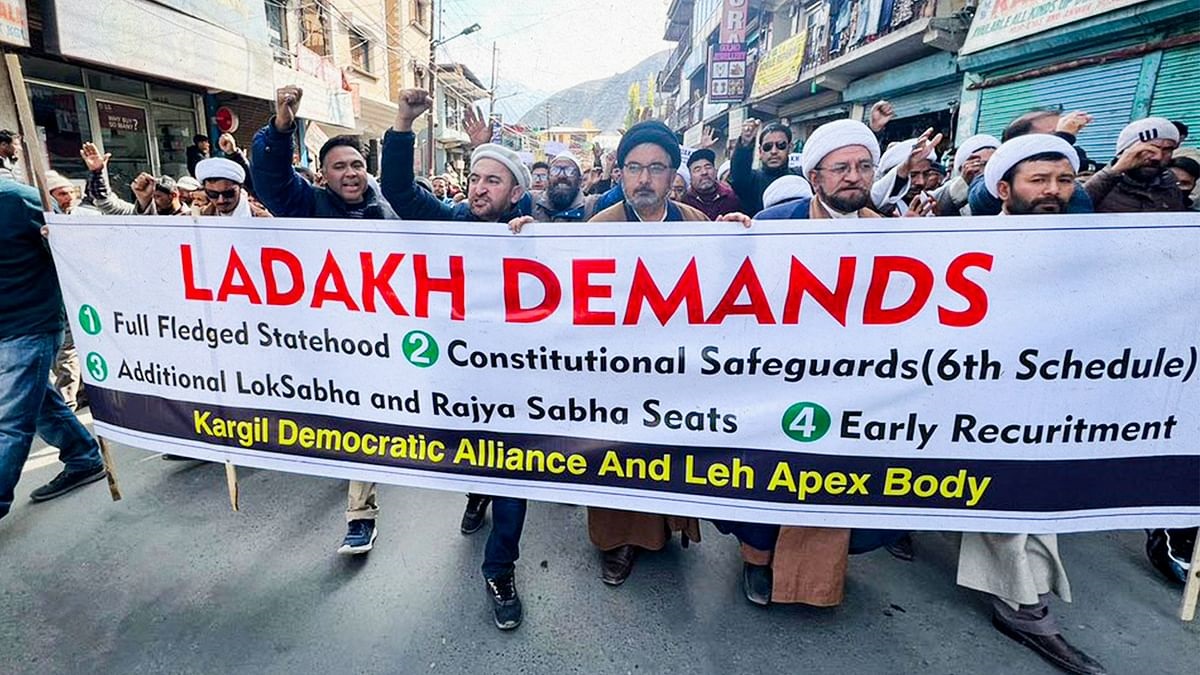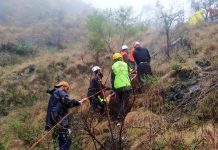
KDA and LAB, parties representing Kargil and Leh, have refused to meet a 17-member panel constituted by the Centre insisting they would discuss nothing short of statehood for Ladakh. But, with a population of just 3 lakh, Ladakh hardly qualifies for statehood. A report by Riyaz Wani
In the 1990s, Ladakh, which was formerly part of the J&K state, sought the status of a union territory. The demand was miraculously fulfilled on August 5, 2019, when J&K’s autonomous status under India’s constitution was withdrawn. Now that the region has been a union territory for over three years, it has launched an agitation for statehood.
On January 7, Kargil Democratic Alliance (KDA) and Leh Apex Body (LAB), an amalgam of political parties from Kargil and Leh – two Ladakh districts – made a formal demand for statehood apart from asking for constitutional safeguards for the region’s unique culture and demographic composition.
Significantly, the meeting came days after the Ministry of Home Affairs (MHA) constituted a 17-member high-powered committee headed by Minister of State Nityanand Rai to “ensure the protection of land and employment” for the people of Ladakh. According to the MHA order, the committee will “discuss measures to protect the region’s unique culture and language, taking into consideration its geographical location and its strategic importance.”
Ladakh Lieutenant Governor RK Mathur and chairpersons of Leh and Kargil Hill councils are among members of the panel.
But the KDA and the LAB have now refused to meet the committee, asking the centre to meet their four conditions before they do so: They want the committee to discuss statehood for Ladakh, a constitutional safeguard under the Sixth Schedule of the Constitution of India to protect the interests of the tribal people of Ladakh, formation of Public Service Commission and the reservation of jobs for the youth of the region, and the creation of two separate parliamentary constituencies for Leh and Kargil.
“The meeting further strongly objected to the composition of members of the High-Powered Committee representing Leh APEX Body and KDA as the government has arbitrarily excluded and included members without consultation with the APEX Body and the KDA,” the joint statement read. “It was further resolved that the government should include all the names as proposed by Leh APEX and KDA body in the year 2021 as per Home Ministry’s instruction.”
The demand for statehood, made unanimously by Leh and Kargil districts has become a source of concern for the centre. On the other hand, the demand is borne out of a deepening anxiety among Ladakhis about their identity in a governance system directly controlled by New Delhi.
This is an ironic turn of events considering that the people in the Buddhist majority district of Leh celebrated when Article 370 was withdrawn in August 2019, more so, when the region was granted a union territory (UT) status which was a longstanding demand among its Buddhist population. But with the UT demand granted, Ladakhis have suddenly become conscious of the drawbacks of the move, which they think has disempowered them and also made them vulnerable to demographic change. Hence the demand for constitutional safeguards under 6th Schedule.
In the new scheme of things, the democratically elected LAHDCs, both of Leh and Kargil, which acted autonomously in undivided J&K, have become redundant. The region is now directly ruled by the centre through a Lieutenant Governor. So, LAHDCs effectively mean little for regional empowerment.
The total population of Ladakh, according to the 2011 census is 2.74 lakh. While Leh with a population of 1,33,487 is Buddhist majority, Kargil with a population of 1,40,802 is Muslim majority. Overall, Ladakh has a slim Muslim majority.
It is for the first time in decades that the two Ladakh districts have been on the same page in pressing the government on their demands for statehood and protection of rights. The demand for a full-fledged statehood has made things very complicated. Ladakh hardly qualifies for statehood with a population of just three lakh. This has created a quandary for the union government. More so, at a time when it has no immediate plans to even restore statehood to Jammu and Kashmir.
“We will continue our protests. We believe people of Ladakh should get their democratic rights in the true sense. Our rights have been usurped,” said Sajad Hussain, a leader of Kargil Democratic Alliance. “The centre should not treat us like Gilgit Baltistan is treated by Pakistan.”











